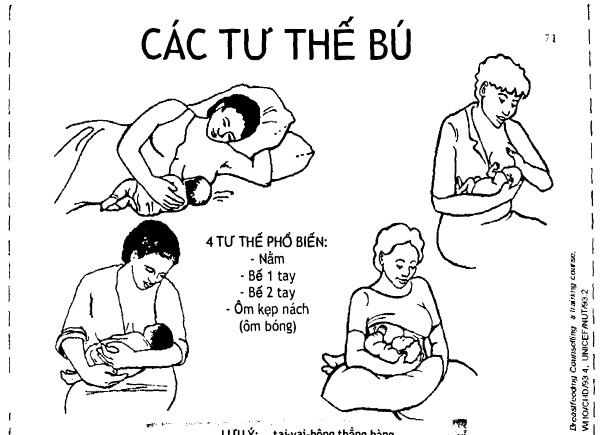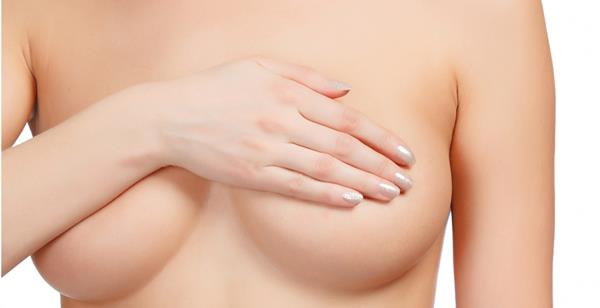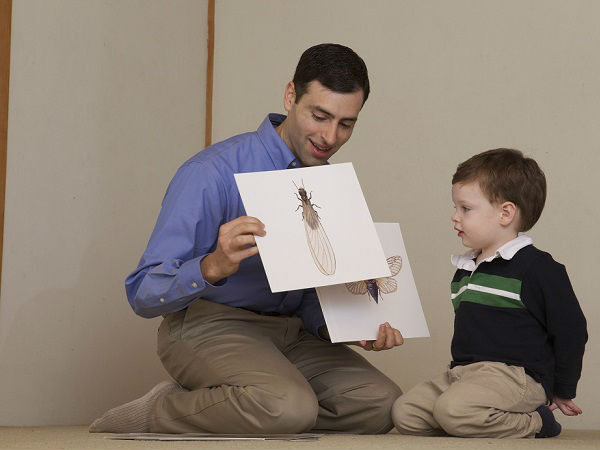Everyone has thought for a long time how to breastfeed is very simple. In fact, every mother will instinctively know how to breastfeed her newborn. However, the problem of how to know the right position to breastfeed, how to breastfeed is not choking ... then the mother needs to learn more carefully.
content
How to breastfeed properly?
Correct lactation position
How to breastfeed without choking
Common problems when breastfeeding
What foods do mothers eat?
During the first 3 days after birth , the breasts release colostrum, a yellowish liquid that contains many antibodies that help the baby fight infection. Over the next few days, colostrum will gradually change and become whiter and more abundant.
How to breastfeed right after birth is very important so that your baby can suck all the precious "gold" drops. Around day three, when the milk begins to "accumulate", the breasts will feel heavier.
You will find that your baby will swallow larger gulps with each feed. Do not worry about running out of milk without giving your baby "baby milk"!
The more your baby sucks, the more milk his body will produce. Therefore, the best way to establish and maintain a milk supply is to breastfeed whenever your baby is hungry.
How to breastfeed properly?
Being a mother is difficult, it's not all jokes and breastfeeding, that's the process you need to learn:
Child care: Bring the baby so that the baby is completely facing you. Lift the baby's chin up against his chest, his nose is not blocked, and his head is tilted back slightly.
Encourage your child to open his mouth: Hold the baby's chin against his chest and rub his upper lip and nose with the nipple to encourage his mouth to open.
Sucking: When the baby has open mouth, point the nipple toward the palate. Your baby will have the nipple and most of the nipple (the dark part around the nipple) in the mouth. The nipples that are exposed above the mouth are more visible below the mouth.
Check the nipple position: You should think about what it feels like when your baby starts to suck. Are you hurt? How about pulling the child a little closer? Does it still hurt? If so, gently bring the child out and start over. Children will get milk thanks to a combination of sucking and creating pressure in the mouth. You may also feel a tingling sensation, as the milk starts to flow you should see the sucking / swallowing movements of the baby more rhythmic.
Continue to breastfeed: Your baby will suckle quickly at first and slowly later. Young children often fall asleep before they are full. Changing a baby's diaper during a feed will often serve as a reminder that he hasn't finished feeding.
End the process of breastfeeding: Usually, the baby will stop feeding and release. If you want to stop breastfeeding your baby, you can gently stick your little finger in the corner of the baby's mouth to stop the baby's sucking. Your baby will soon let you know if he is still hungry or not.

During the first week, the baby can feed 7-12 times a day, and this is very normal
When your baby is finished feeding, both mother and baby are probably ready for a long sleep. If your baby does not suck right away, don't worry as some babies need longer to get started.
Infants can feed for an hour at a time, but as they get older they can satisfy their hunger in about 10 minutes.
Many babies have a “fussy” period and during this time they may want to feed more or less times than usual. It is still important to breastfeed the baby properly mom!
Correct lactation position
Here are some proper breastfeeding positions that many mothers apply. Sisters can choose a position that is most suitable and comfortable to breastfeed
Horizontal grip
There are many breastfeeding positions you can choose from, in which, holding is the most suitable position in the first days of breastfeeding. The mother sits comfortably in a chair with armrests.
Baby is horizontal, curled up, down the direction of mother's supporting arm. Both the baby's body and head are in mother's arms and palms. Avoid bending or stretching excessively.
Lullaby type
The arm supporting the baby's head coincides with the direction of the breast to breastfeed. The mother should sit comfortably in a chair with armrests. Put your head in the mother's elbow. Can put a pillow in the hand to support.
Mother gave birth by cesarean section
Hold the baby on one side of the mother's chest so that her elbows are bent for support. The mother's palm opens holding the head and neck of the raft towards her chest. For more comfort, try placing a pillow and a mother's lap.
Breastfeed your baby
The mother lies on her side, facing her baby's face into her breast. When the baby is attached to the breast correctly, place a pillow on the head to create a more comfortable position for the baby to breastfeed.

Some correct and common breastfeeding positions mothers need to know
How to breastfeed without choking
Most of these cases occur because mothers do not know how to breastfeed without choking or suckling in the wrong position. To minimize choking on the baby's milk, the mother should note the following points:
Step 1: Put the baby on the mother's lap
Step 2: Let your baby lie on his side about 30-45 degrees above the mother's back and absolutely do not breastfeed in the supine position or when the baby is sleeping
Step 3: The mother let the baby to close all the areola, head slightly tilted, tongue and lower lip of the baby placed under the nipple.
Step 4: Mothers put two index fingers and a thumb to hold the nipple in the middle to control the flow of milk, especially for mothers who breastfeed directly.
For bottle-fed babies, mothers should buy a bottle with a block to make sure the amount of milk for babies does not come out too much compared to the baby's suckling.
Common problems when breastfeeding
When breastfeeding, mothers will encounter problems such as nipple pain, engorgement, mastitis ... Each case will have its own way of handling, don't worry too much!
Nipple pain
If the nipple looks pinched or deformed when the baby is finished feeding, the baby is not latching deep enough.
In this case, the mother should encourage the baby to open his mouth by rubbing the area between the nose and upper lip with the nipple. Point the baby's body towards the mother, and press the chin against the mother's chest.
Stretch the milk
This is when your breasts are too full and feel stiff and painful. Stretching can also cause a flattened nipple, making it difficult for the baby to latch.
You can squeeze a little milk around the base of the nipple, gently massage your chest, apply a hot compress before a feed, and a cold compress after a feeding to ease discomfort.
Lactation can be avoided by feeding on demand.

If breast tenderness is caused by blockage, mother can massage gently to drain the milk jet
Kumquat milk
You may feel a sharp pain and see a red bulge or patch on your chest. The mother should continue to feed from the affected breast and gently massage towards the nursing nipple. Applying hot compresses to the affected area may also help.
Mastitis
Mastitis is an infection of a blocked ducts. In this case, your doctor may prescribe anti-inflammatory drugs or antibiotics.
It is important to let milk continue to move through that breast by feeding or expressing. Medicines for mastitis do not affect breastfed babies.
How to properly learn how to breastfeed seems a bit complicated, but that is just the initial surprise, mom! A few times mother and baby will also get used to it, gradually becoming a habit without having to remember each step.

10 certain foods that mothers must consider carefully Breastfeeding is definitely the best way to provide all the nutrients and antibodies needed in the first few months of life. That is the reason when breastfeeding needs to consider the food intake of the body.
What foods do mothers eat?
Poor nutrition, fatigue, and anxiety are all factors affecting milk supply. You need to know what to eat so much milk to ensure a balanced diet.
In which, the menu must be full of 4 food groups: starches, proteins, fats, vitamins and minerals.
If it is difficult to have time for adequate meals, mothers should increase energy-rich snacks such as nuts, beans, fresh fruit or healthy breakfast cereals.
In addition, mothers should also pay attention to supplementing water for the body. Always keep a bottle of water within reach while you are breastfeeding.

Breastfeeding mothers need to limit their intake of fast foods and stimulant drinks such as coffee tea
When breastfeeding, mothers should also avoid fast foods, indigestion foods, alcohol, beer and tobacco. For those moms who are "addicted" to tea and coffee, can sometimes sip a little, but not too many!
According to research, young children are very sensitive to coffee. Some kids can even get irritable and sleepless with just a small amount of coffee.
One more note after breastfeeding, let the nipples dry naturally. If you are in a hurry, dry your nipples gently. To dry your nipples each time you feed your baby, change your bra often.
When you take a shower, do not apply scented soaps or shower gel to your nipples. If the nipple is too dry or chapped, a rubbing oil containing lanolin, or some olive oil, can be used on the nipple.


















